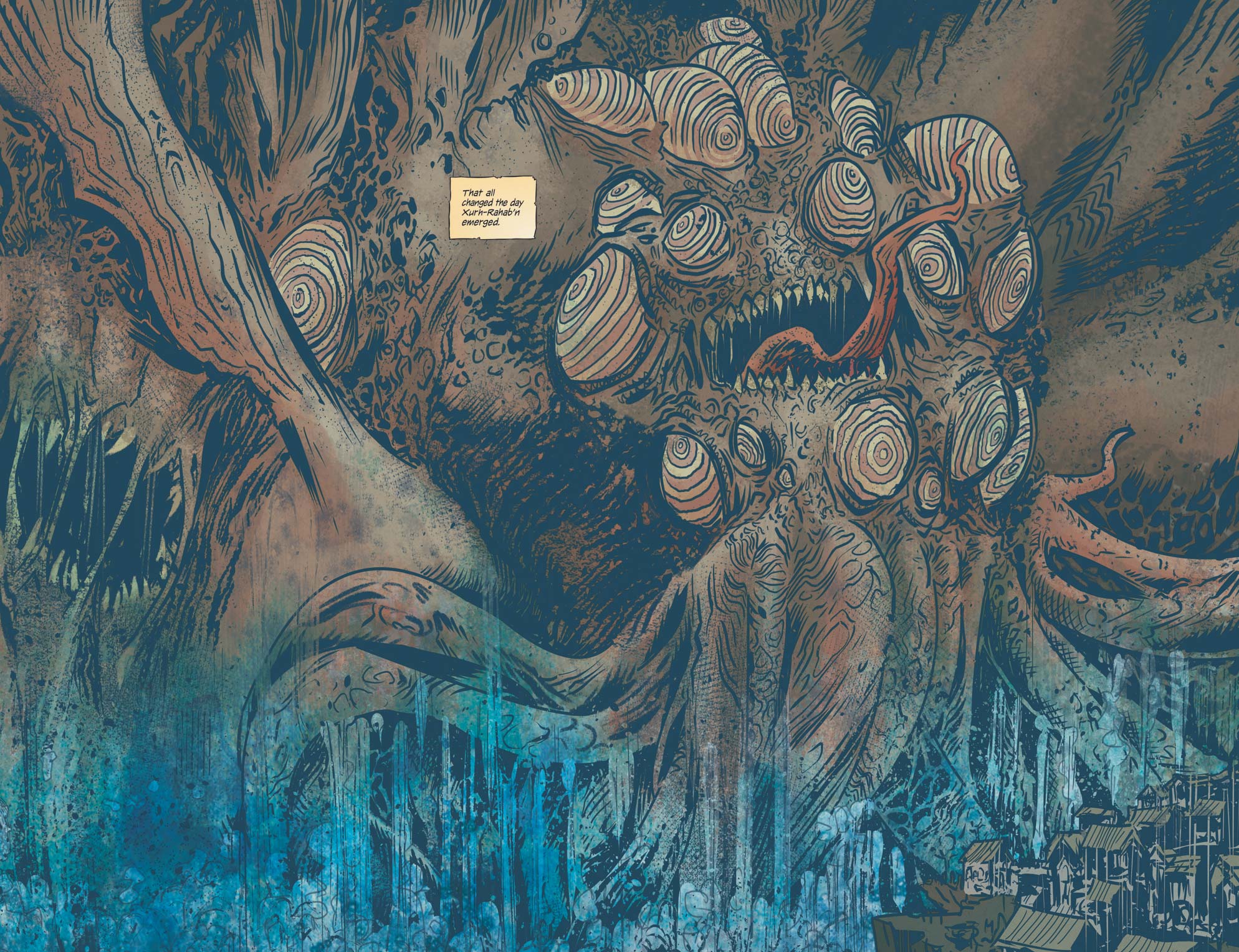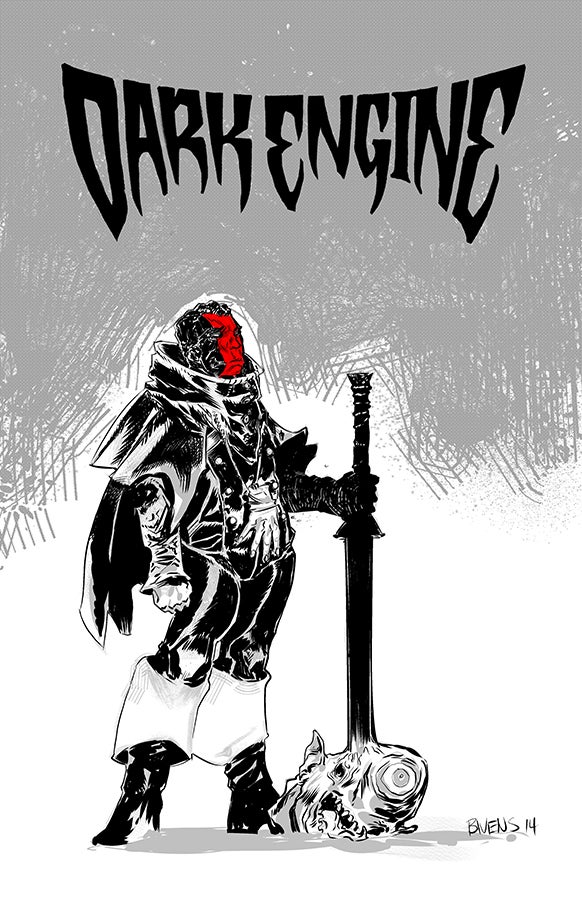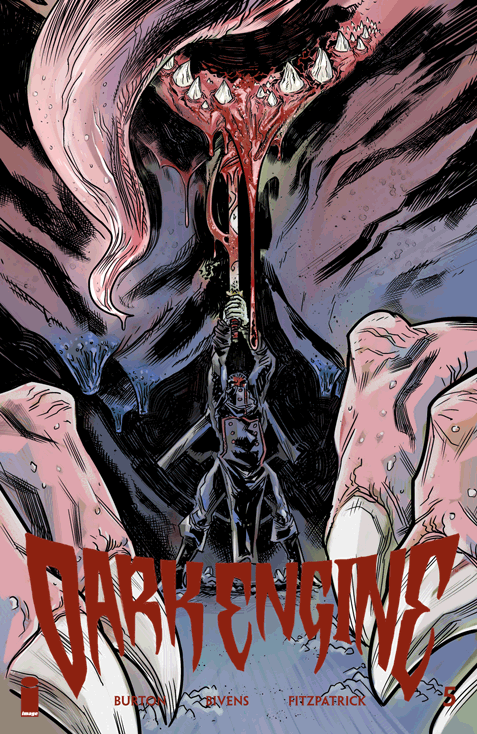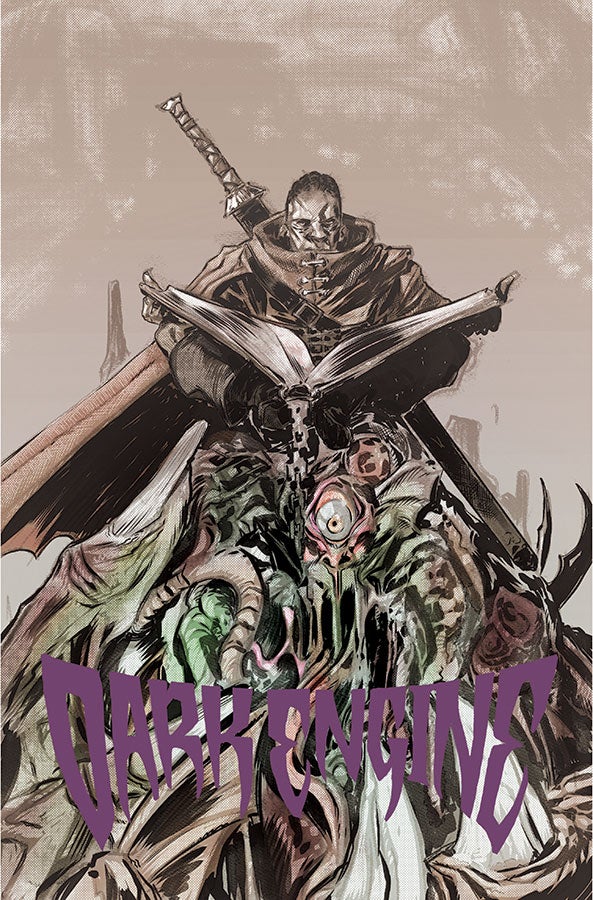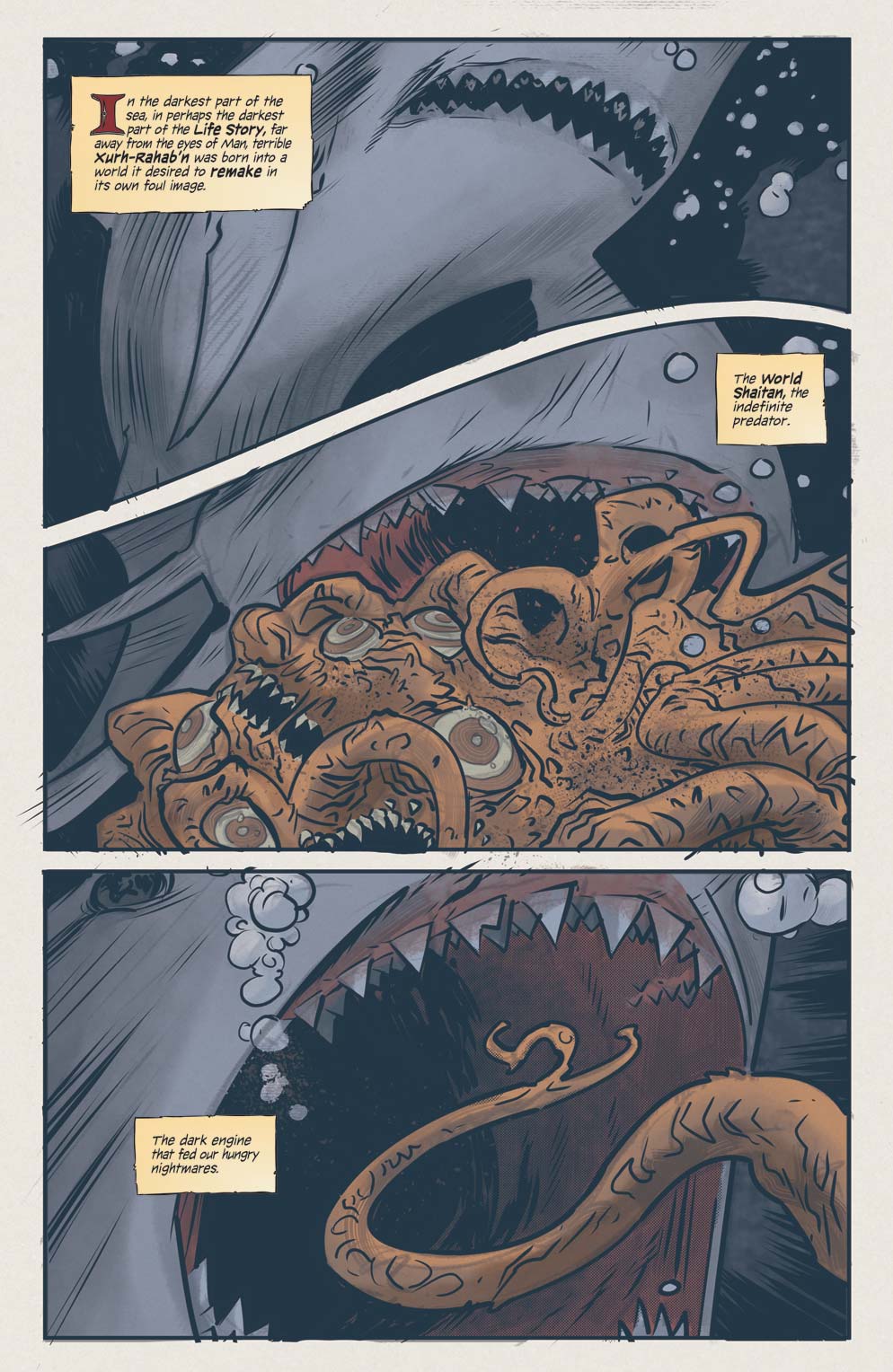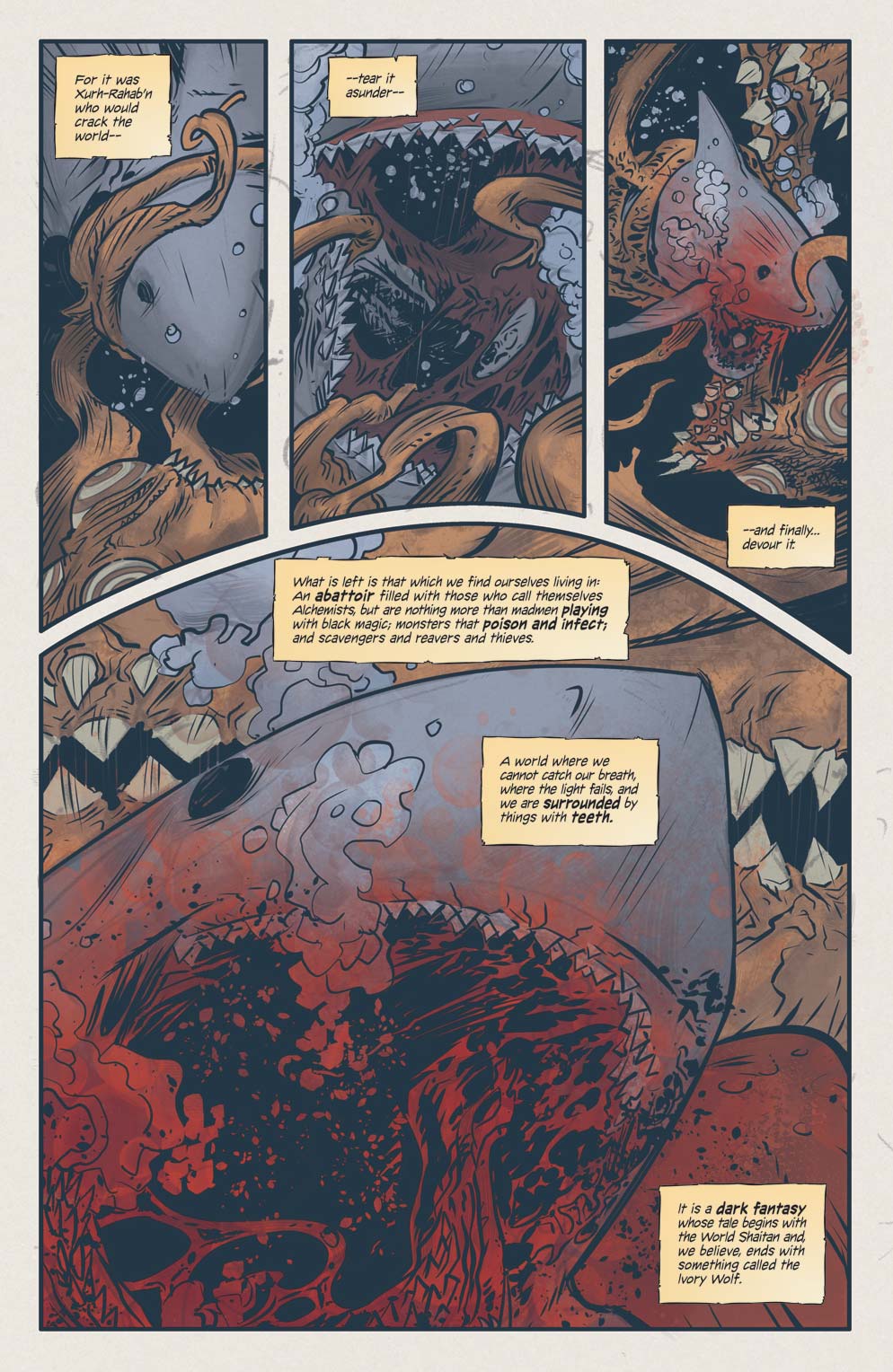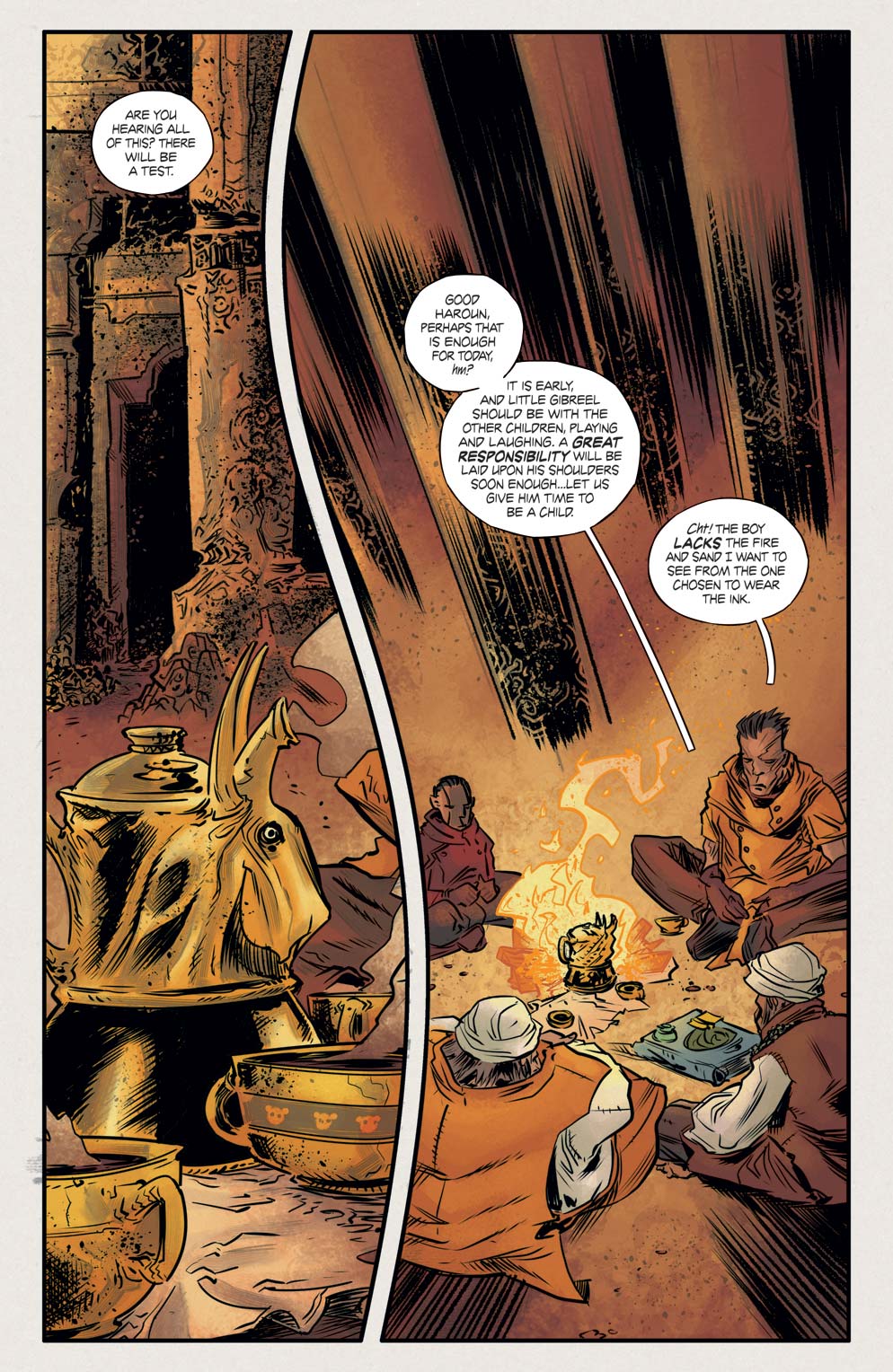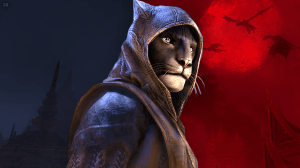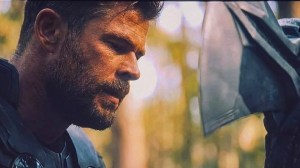Image Comics’ cult hit dark fantasy series Dark Engine begins its second arc today with issue #5. A twisted, sprawling, experimental, and poetic time-traveling story, Dark Engine is easily one of the strongest and most exciting debuts from a brand new creative team in recent memory.
Videos by ComicBook.com
With the first trade paperback on the shelves and second arc just beginning, Comicbook.com sat down with series writer Ryan Burton to get the scoop on what’s coming next in Dark Engine.
So, give us a recap of the first arc and where we find ourselves at the beginning of the second.
Sure thing. In the future, a group of alchemists created this woman, Sym, to travel back in time to stop whatever it was that ruined their world. It’s only at the very end of the first arc that they find out that she had a hand in the ruination and destruction. They powered Sym with an engine that allowed her to travel to the exact point in time where everything went screwy. Turns out the engine had a mind of its own, did a tour through time, and once it was ready, it hatched. Moments after its hatching, it threw up a wave of vomit that soon hardened, and encased Sym at the bottom of the ocean. This all sounds f^&(ing crazy, I know. [Laughs]
That’s one narrative. Another is us following the alchemist Jin, who is our human, empathetic,perspective through this futuristic, brutal world. Through Jin the reader get the pathos of humanities plight in the ugliness of it all. At the end of the first arc, he’s essentially beaten to death by someone who is very frustrated and tired of hearing that the glass is still half full.
In the third narrative we get a look into the bestiary through the voice of the dragon. The dragon is this cipher who for one reason or another is searching for Sym, who he calls the Ivory Wolf. For the first three issues he was camping inside of a dead colossi. There was something pulling at him so he journeyed inside this behemoth, where he found its dead pilot. Think of it like a biological tank, if you will. Well, a tank needs a pilot, and this one was another dragon. You get a hint about what the dragon’s ultimate purpose is, and that is to drive one of these, what we we cal “Gigahuls.” The pilots speak to each other through smokespeak, and our dragon takes the head of the dead pilot which is still spewing smokespeak, which means there’s still another colossi out there that it’s speaking to. Now, if the dragon actually makes it to the end of his journey is an entirely different matter.
The end of the arc saw these three characters changed dramatically, and the clock is ticking. No one is safe.
So the second arc starts with issue #5. Tell us a little bit about it.
We’re going to see a lot of change. A big theme throughout the second arc is change, whether it’s emotional or physical. We reintroduce Sym, and John has designed her in such a way that people will be really happy with it. People were really happy with his initial design, but there wasn’t a lot of superfluous design, it was bare-minimum. And I don’t mean that tongue in cheek… because she goes around the first arc almost entirely nude. That being said, for the second phase of her life she looks absolutely different, absolutely remarkable.
She gets a new directive once she breaks out of this crystalline prison she’s trapped in at the end of the first arc. Then we’re introduced to the fourth and final protagonist. We’ve got Sym, we’ve got Jin, we’ve got the dragon, and the fourth is the Inkface Ranger. He’s a black swordsman who was a child raised by three wise men who basically pick the champion of mankind. The reason he’s called the Inkface Ranger is because he wears a red stripe of ink on his face at all times that represents all the blood lost by humanity since these dark times began. He has set out on this great hunt to destroy whatever Gigahul’s there are, and to find the one person who created all of this destruction.
How long do you anticipate this series to go?
We’re taking it arc to arc, actually. Right now we’re planning on taking a production break after issue 8 hits the stands, which ends the second arc. When the time is right, we’ll be back for another one.
Tell us about your collaborators John Bivens and Kelly Fitzpatrick.
John is a pretty busy dude. He’s going to school full time in Minneapolis. I think he’s getting his Masters in Sequential Art. When he’s not doing that he’s working on Dark Engine. I think he’s got another book coming out called Old Wounds. He’s super talented. I like how heavy his work is, how visceral it is. You can feel the actual…weight of the characters. A lot of people who use inks as heavy as John does, their characters seem really lithe and fast, but John’s always seem very grounded. I don’t know how he does it, but it’s remarkable talent. Clearly, he loves drawing monsters and the stuff that he drew for the first arc was pretty incredible, but for the stuff he’s drawing in the second arc, he’s tapping into something that’s surreal. I’m excited. I’m excited to have people see John’s art.
Kelly Fitzpatrick who was very much a pleasant surprise. She joined us on issue 2. She was recommended by another colorist; and when she came in she absolutely killed it. We’re lucky to have her, and I know Dark Engine wouldn’t look the way it does without her. The world and the narrative and the passion the book has wouldn’t be complete without her.
When you’re writing for them do you write a full detailed script or is it more of a “Marvel Style” open ended approach? Do you give coloring notes?
It started off detailed. The first two issues were pretty detailed and then it got looser and looser. Now I give them a script that has all of the pages but the dialogue is pretty sporadic. Nothing in the dialogue feels right until I see John’s linework. I can see where he positions the characters, what movements they have. I may have one thing in mind that he’ll execute a different way so I’ll adjust the script. Right now I can say its very loose. I’ll say here are the twenty-two pages, here are the panels, and I’ll have a third to half a script worth of dialogue that’s really just for me to anchor myself in the story.
Sometimes I give color directions. If I have something specific, I’ll tell them. The Inkface Ranger needed to be black with a red stripe; the ink on his face had to be red red red. And Sym had to be a kind of putrid-ivory color in the second arc.
We have a new letterer, Thomas Mauer, on the book, starting with issue 5, and I couldn’t be happier. Thomas has been doing Copperhead and Rasputin for Image Comics, and so far, with Dark Engine…what he’s shown me… Thomas brings a level of design that is totally new and yet so so right for the book. There’s this wonderful lyrical quality to his work that I haven’t encountered before.
One of the things I find interesting about Dark Engine is the method and structure of storytelling. It seems that in some of the reviews, some readers will say, “I don’t understand what’s going on,” but I disagree with that. I think its very easy to figure out what’s going. But your approach, where you’re showing what is happening rather than explaining it, is interesting. You definitely are trusting in the long game with Dark Engine, where everything will be revealed at its proper time. I think it works and I appreciate that method, though I know not everyone does. I’m curious about how you walk that line where you have to figure out what to tell and what not to tell while dealing with issues of narrative clarity.
That’s a really good question. As far as deciding on what kind of narrative voice to take…for example the first issue was intentionally sparse because I wanted to introduce readers to a character that was nothing but driven fury and rage. And I didn’t want to hinder that with a lot of exposition or dialogue.
Ideally, the information readers got from the alchemists and the dragon set the tone for the two different worlds that we’re playing with in this story; the human world and the monster world. I didn’t want that to have the same type of voice for both. I wanted to take third person omniscient for the dragon, and I wanted to have your regular conversation with the alchemists–one that felt that the reader was always looking in on. You were kind of walking in on the middle of a scene where two individuals were talking about what was going on. In issue two, you walk into an anatomy lesson on the sporedevil. In issue three you’re a voyeur into the Cofferwright’s conversation with Jin. Same thing with issue one when Jin is talking to his lover, who later kills himself.
Now as far as the narrative style for the second arc, issue five is very lyrical in approach, and that’s because the Inkface Ranger is being told the Life Story, which is the history of the world. That is where the exposition is–that’s where everything is cleared up and people are told the origin of the world and why things are as rotten as they are.
There are some readers who find the book gratifying and poetic and visceral, and then there are others who are like, “what the fuck is going on?” Dark Engine will never be a book that’s for everyone, and I don’t think I want it to be that way. I don’t want our book to be something easy that we spoon-feed to our readership. Comic book readers are some of the smartest and most intuitive people I know, and if I’m going to ask them to pay three bucks and some change for our comic, then by God,I want to give them something that they can revisit and take their time with.
Is Sym aware of her purpose and where she came from?
She’s aware in the first arc. She says “where is the enemy?” in one of the issues. She’s aware, but she doesn’t realize how tragic her situation is. She meets more people and gains new experiences on her way and that’s how she’ll change. It’s nature versus nurture. Her nature is to destroy this enemy that ruined the world, but the nurturing aspect is all the things she will experience on that journey–the experiences that may change her.
When you’re writing this book, do you have writing exercises or routines you use to put yourself in that Dark Engine mindset?
Sometimes I listen to music. Sometimes I like absolute silence, where I only hear my breathing and the tap tap tap of the keyboard.
My routine: I wake up, take care of my beautiful kids, have some coffee, and then I write. I keep my writing to my self-imposed schedule. I may come back and write some more later in the day.
Sometimes when I write during the day, it stinks, and I throw it all away. And then sometimes there are days that the words just seem to sing.
Well then to wrap this all up, tell us about what you’ve been reading/watching/listening to these days?
I’m actually reading more prose than comics. I made it a very hard goal this year to read more prose because I’ve become pretty insular by just reading mainly comics. I realized that no matter what comic I read… I have this feeling that I wasn’t getting enough…experience. I think it’s imperative that as a writer I read as many different types of writing as I can.
As for what I’m reading–I just finished Salman Rushdie’s Haroun and the Sea of Stories and Luka and the Fire of Life. Right now I’m reading Palahniuk’s Rant, after that I’m going to read Murakami’s Hard-boiled Wonderland.
